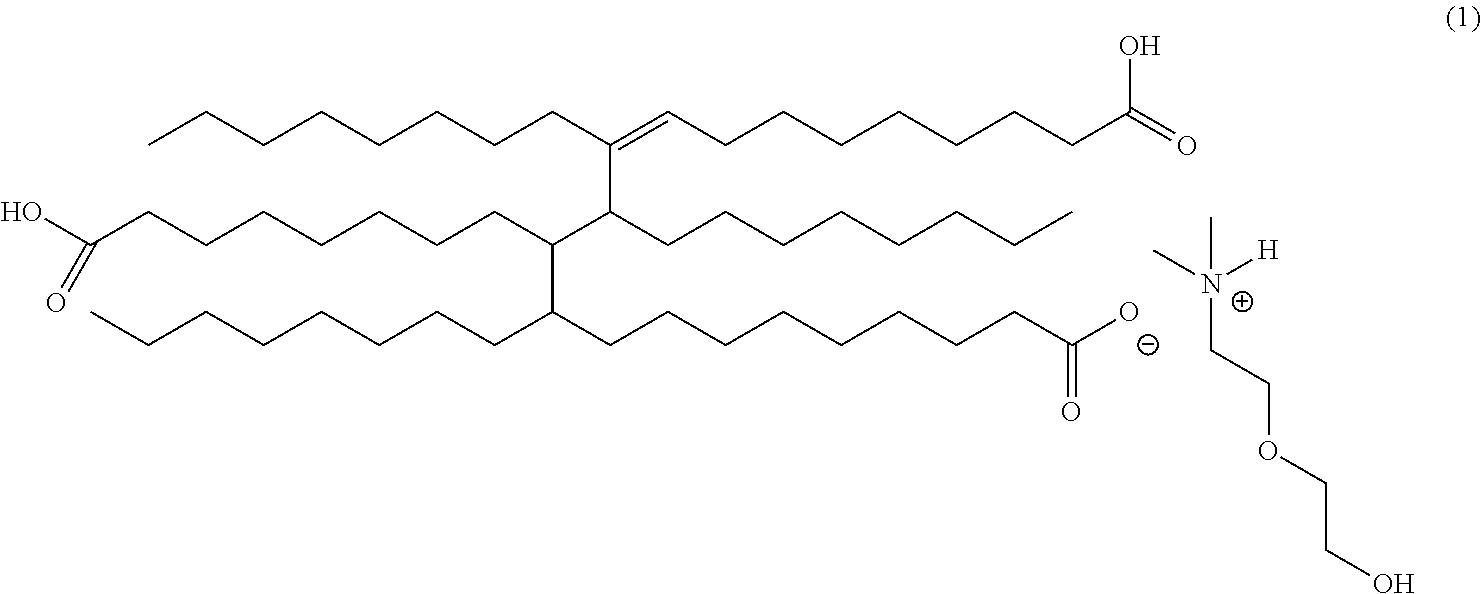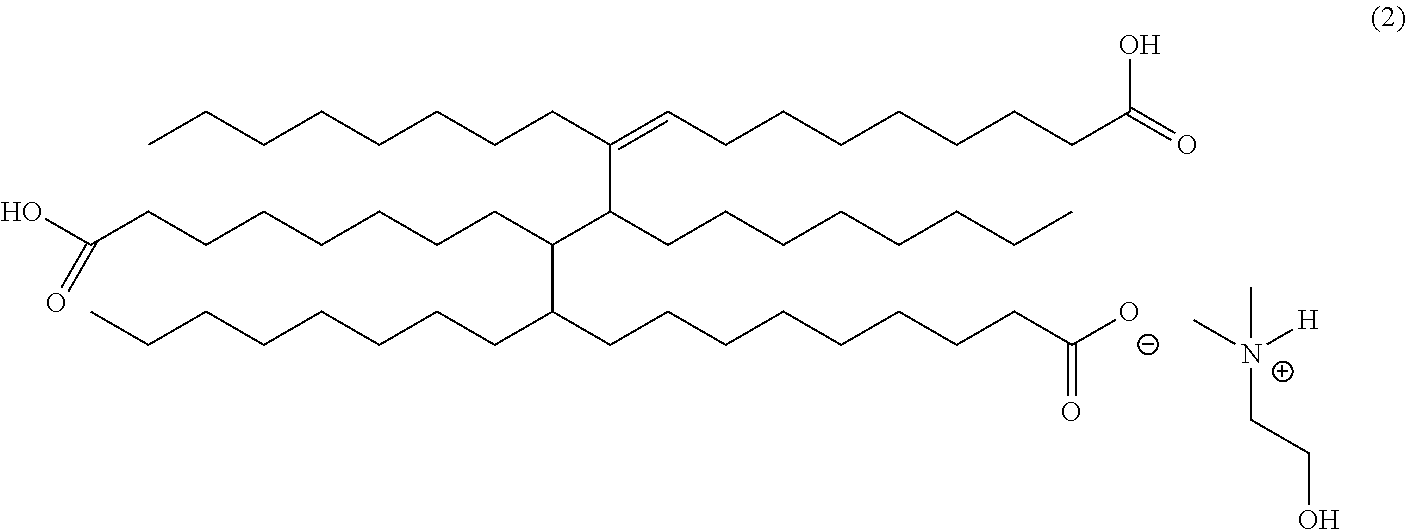Corrosion inhibitors for oil and gas applications
a corrosion inhibitor and oil and gas technology, applied in the direction of other chemical processes, sealing/packing, wellbore/well accessories, etc., can solve the problems of long-standing corrosion of metal surfaces due to aqueous or mixed media, severe corrosion, and even more troublesome problems, so as to increase the effect of partitioning
- Summary
- Abstract
- Description
- Claims
- Application Information
AI Technical Summary
Benefits of technology
Problems solved by technology
Method used
Image
Examples
example 1
Synthesis of Product 1
[0047]To a 1-L round bottom flask was added 15.53 g of trimeric C18 unsaturated fatty acid (dimer-trimer acid, [CAS 68937-90-6]) and 298.6 g of crude tall oil [CAS 8002-26-4. The flask was fitted with a thermocouple / temperature controller and overhead stirrer. The contents of the vessel were stirred and a mixture of N,N-dimethylethanolamines (50.07 g, [CAS 108-01-0], [CAS 1704-62-7]—these components are added simultaneously to the flask drop-wise over a 20-minute period. The reaction was exothermic and the temperature increased with addition (total 15° C.). The reaction was stirred for two hours with no heating, and the temperature was seen to decrease with time. Heavy aromatic naphtha (95.81 g, [CAS 64742-94-5]) was added followed by branched dodecylbenzene sulfonic acid (76.8 g, [CAS 68411-32-5]). The addition of DDBSA was also exothermic and a temperature increase from 30.4° C. to 42° C. was noted. The contents were stirred for approximately 5 minutes and tr...
example 2
Synthesis of Product 2
[0049]To a 1-L round bottom flask was added 28.43 g of trimeric C18 unsaturated fatty acid (dimer-trimer acid, [CAS 68937-90-6] and 536.21 g of crude tall oil [CAS 8002-26-4]. The flask was fitted with a thermocouple / temperature controller and overhead stirrer. The contents of the vessel were stirred and a mixture of N,N-dimethylethanolamines (90.20 g, [CAS 108-01-0], [CAS 1704-62-7] are added simultaneously to the flask dropwise over a 20-minute period. The reaction was exothermic and the temperature increased with addition (total 13° C.). The reaction was stirred for one hour with no heating, and the temperature was seen to decrease with time. Isobutyl alcohol (157.71 g, [CAS 78-83-1]) was added and the mixture stirred for 1 hour prior to storage. The composition of Product 2 is summarized in Table 2.
[0050]
TABLE 2GenericTypicalComponent / CASRNDescriptionWt %1.Fatty acids, C18-unsatd., trimersFatty acid 3.5[FAT, 68937-90-6]2.Tall oil [TO, 8002-26-4]Fatty acid66...
example 3
Synthesis of Product 3
[0051]Synthesis of Product 3 begins with an alternate synthesis of Product 2. The 1-L round bottom flask was also fitted with a thermocouple / temperature controller and overhead stirrer. To a 1-L round bottom flask was added 13.7 g of trimeric C18 unsaturated fatty acid (dimer-trimer acid, [CAS 68937-90-6] and 259.3 g of crude tall oil [CAS 8002-26-4]. The flask was fitted with a thermocouple / temperature controller and overhead stirrer. The contents of the vessel were stirred and N,N-dimethylethanolamines (43.7 g, [CAS 108-01-0, CAS 1704-62-7] are added simultaneously to the flask dropwise over a 20-minute period. The reaction was exothermic and the temperature increased with addition (total 11° C.). The mixture was stirred for one hour with no heating, and the temperature was seen to decrease with time. Isobutyl alcohol (75.8 g, [CAS 78-83-1]) was added and the mixture stirred for 1 hour. To 392.5 g of this alternative form of Product 2 was added DDBSA (61.5 g,...
PUM
| Property | Measurement | Unit |
|---|---|---|
| time | aaaaa | aaaaa |
| temperature | aaaaa | aaaaa |
| temperature | aaaaa | aaaaa |
Abstract
Description
Claims
Application Information
 Login to View More
Login to View More - R&D
- Intellectual Property
- Life Sciences
- Materials
- Tech Scout
- Unparalleled Data Quality
- Higher Quality Content
- 60% Fewer Hallucinations
Browse by: Latest US Patents, China's latest patents, Technical Efficacy Thesaurus, Application Domain, Technology Topic, Popular Technical Reports.
© 2025 PatSnap. All rights reserved.Legal|Privacy policy|Modern Slavery Act Transparency Statement|Sitemap|About US| Contact US: help@patsnap.com



